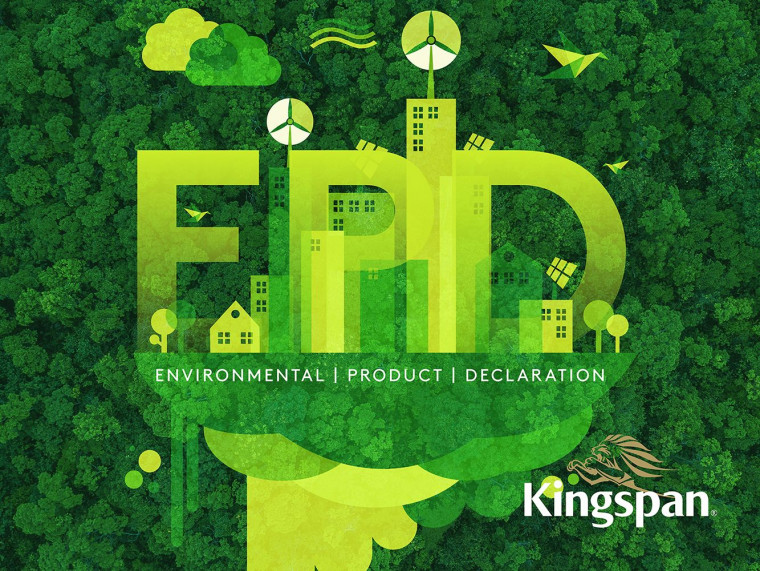Credible Certifications are Vital for a Sustainable Building Industry




Credible certifications are vital for a sustainable building industry
Today, environmental credentials are the big drawcard for many buildings. This includes maximising natural light and ventilation to reduce energy requirements, incorporating building materials that deliver high thermal and acoustic performance for energy efficiency, and involve a low carbon or carbon neutral manufacturing processes. With many tenants, builders, developers and investors seeking to build their reputation around affiliations with environmentally conscious projects, the onus is now on the construction industry to deliver on that demand.
Why is it important to ensure credibility
From ratings to certifications, there are several ways to prove that a building and its materials are sustainable. However, there is a risk today that these tools may be used incorrectly and make a building appear more sustainable than it is, largely in part to the colours, logos and statements that ratings and certifications can contain, and when used disingenuously they can blur the lines between sustainable fact and fiction. This is known as ‘green washing’; the act of making something seem more environmentally friendly than it is with colours, shapes and branding that we typically associate with sustainability.
Credible certifications like an Environmental Product Declaration (EPD) are the key to ensuring buildings meet their sustainability targets and achieve the desired environmental outcomes. EPDs are independently verified and registered documents that help to quantify the environmental credentials of an organisation’s products and services. They help to communicate these credentials robustly, objectively and transparently with customers and consumers.
Achieving an EPD is a step towards credible sustainability credentials
Achieving an EPD for building and construction products demonstrates an organisation’s commitment to sustainability, while allowing buildings to fast-track their goal to obtain carbon neutral certification under the Australian Government’s Climate Active Carbon Neutral Certification.1 For example, products from Kingspan Insulated Panels achieved EPD certification by undergoing a comprehensive Life Cycle Assessment (LCA) that considers the whole life cycle, assessing its compliance against the International Organisation for Standardisation (ISO) standards ISO 14040, ISO 14044, and ISO 14025.
An LCA has rigorous criteria that goes beyond the environmental impact of producing a specific product or service. It also considers the origins of a product’s raw materials for each product, its transportation, processing, production, installation, maintenance, use, and end of life fate.
Why are EPDs important for Australia’s building sector
An EPD is fast becoming a certification that companies are most proud of, as they provide a range of benefits that give their holders significant clout in the discussion surrounding sustainability and green building credentials.
International acceptance. EPDs registered with EPD Australasia are based on the ISO standard ISO 14025 and the rules of the International EPD® System, assuring international acceptability. Australasian EPDs can also be used to obtain credits in the US Green Building Council’s LEED rating system or the UK’s BREEAM third-party certified standards.
Credibility and adaptability. EPD criteria is measured on the scientific principles of an LCA and is verified regularly by independent experts, meaning they must remain relevant and are non-bias. They can also be applied to a wide range of products and services – they do not discriminate by category as their function is to communicate environmental impact accurately and transparently.
Green Star and ISCA Credits. EPD data and information is used to aid environmental assessment of building design and infrastructure projects. Building and construction products with an EPD help clients obtain credits for Green Building Council of Australia’s Green Star Buildings Rating System and Infrastructure Sustainability (IS) rated projects across Australasia.
As part of our global Planet Passionate 10-year sustainability program and the ongoing commitment to enhance industry-wide sustainability, Kingspan has achieved renewed Environmental Product Declaration (EPD) listings on several core products; their EPDs can be downloaded from https://epd-australasia.com/company-epd/kingspan-insulated-panels/
By committing to more sustainable practices and achieving renewed EPD listings and certifications in Australia, Kingspan will not only continue to improve its carbon emissions but will continue to help reduce the carbon footprint of buildings that use Kingspan products. The Kingspan EPD is valid for five years, after which it will be revised and updated.
For more details and product specifications, visit www.kingspan.com/au/en




 Indonesia
Indonesia
 New Zealand
New Zealand
 Philippines
Philippines
 Hongkong
Hongkong
 Singapore
Singapore
 Malaysia
Malaysia







